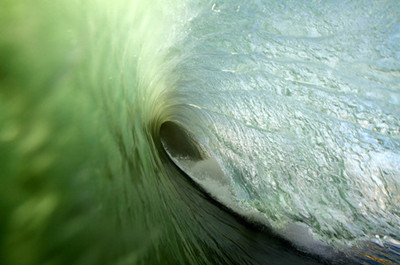(单词翻译:单击)

Seismologists spend a lot of time listening to the earth. Ocean acoustic monitors have been providing information on the earth's vibrations since the 1930's. But there are other sounds those monitors pick up as well, for instance those of waves and choppy waters. These sounds are usually considered just noise and are filtered out of the equation.
地震学家花了很长时间来监听地壳活动,从上世纪30年代开始,声学监测器就开始记录海洋地壳活动的信息。监测器同时也采录下一些其它的声响,比如那些波浪起伏拍击的声音,这些声音通常被当作杂音而未受重视。
But researchers now realize that paying attention to what was previously considered noise can help monitor global climate change. That's according to a study in a recent issue of the journal Science.
但研究者们现在意识到研究这些杂音能够监测出全球气候的变化。这个发现来自近期出版的《科学》杂志上的一项研究。
In shallow coastal waters, the breaking waves directly hit the ground and cause vibrations. In deeper waters, waves traveling in nearly opposite directions create a pulse that travels all the way to the ocean floor and causes new vibrations that can travel long distances.
在海岸较浅的水域中,波浪直接撞击地表产生震动。而在较深的海域,波浪逆向流动相互撞击,由此产生的脉冲力能一直传递到海底,它所引起的震动能够传到很远的距离之外。
Measured at 30-second intervals, these are called microseisms. They're unique and not detectable on land. And they can help us understand more about the frequency, intensity and duration of storms.
因为每过30秒才发生一次,所以它们只能算是微震。这种微震非常特别,在陆地上无法察觉。它能帮助我们更好的了解暴风雨天气的频率、强度和持续时间。
An 80-year archive of acoustic information already exists. The length, stability and regularity give these data a leg up over a sometimes spotty historical scientific climate record. Another tool to understand more about our changing climate.
科学家手上掌握着近80年来的海洋噪音信息档案,其记录的持续性、稳定性及规律性都使得这些数据能够弥补其它气象资料的不足,是科学家们研究气候变化的第一手资料。


